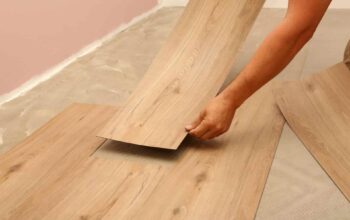In today’s world, where environmental issues have become a pressing concern, it is essential to incorporate sustainable practices and materials into every aspect of our lives. From construction to interior design, there are several ways to reduce our carbon footprint and minimize the impact on the environment. One such aspect is eco-friendly auditorium interior designing, which can help create a sustainable environment while promoting a positive experience for the users. In this article, we will discuss sustainable materials and practices that can be employed to design eco-friendly auditoriums.
Sustainable Materials for Auditorium Interior Designing
Regarding auditorium interior design in Noida, incorporating sustainable materials and practices is key to achieving a modern and environmentally friendly space.
-
Recycled Materials
Recycling is one of the most effective ways to reduce waste and prevent the accumulation of non-biodegradable materials in landfills. Eco-friendly auditorium interior designing can use recycled materials such as wood, plastic, metal, and glass. These materials can be used in various interior design elements, including flooring, walls, ceilings, and furniture. Recycled materials reduce waste and promote the conservation of natural resources, making them an ideal choice for eco-friendly auditoriums.
-
Natural Materials
Natural materials are renewable resources that are easily replenished and do not contribute to environmental degradation. Examples of natural materials that can be used in auditorium interior designing in Delhi include bamboo, cork, and reclaimed wood. These materials offer durability, versatility, and aesthetic appeal, making them a popular choice for eco-friendly designs. Additionally, natural materials are biodegradable, which means they can easily decompose and return to the environment without causing harm.
-
Low-VOC Paints
Volatile organic compounds (VOCs) are chemicals commonly found in paints and other building materials. These compounds harm human health and the environment, contributing to air pollution and respiratory problems. Low-VOC paints are an eco-friendly alternative that contains fewer harmful chemicals, making them a safer and healthier option for auditorium interior design. These paints also emit less odor, improving indoor air quality and reducing the risk of allergic reactions.
Sustainable Practices for Auditorium Interior Designing
-
Energy-Efficient Lighting
Lighting is an essential aspect of auditorium interior designing, providing the necessary illumination for performances and events. However, traditional lighting systems are energy-intensive and can contribute to greenhouse gas emissions. To reduce energy consumption, eco-friendly auditorium interior designing can employ the use of energy-efficient lighting systems such as LED lights. These lights consume less energy, last longer, and emit less heat, making them an eco-friendly and cost-effective option.
-
Water Conservation
Water is a valuable resource often wasted in large public spaces such as auditoriums. To promote water conservation, eco-friendly auditorium interior design can include low-flow fixtures and water-efficient appliances. These fixtures and appliances reduce water consumption, saving money on utility bills while also promoting sustainable practices. Additionally, rainwater harvesting systems can be installed to collect and reuse rainwater, further reducing water waste.
-
Waste Reduction
Reducing waste is an essential aspect of eco-friendly auditorium interior design. By promoting waste reduction, designers can minimize the amount of waste generated during the construction and operation of the auditorium. This can be achieved by incorporating sustainable practices such as recycling, composting, and reusing materials. Additionally, designers can promote waste reduction by designing spaces encourage users to recycle and dispose of waste properly.
-
Acoustic Materials
Auditoriums are designed to provide excellent sound quality, but traditional acoustic materials such as fiberglass can be harmful to the environment. Eco-friendly auditorium interior design can incorporate natural acoustic materials such as cork, recycled denim, and cellulose insulation. These materials offer excellent sound absorption while also being environmentally friendly.
-
Green Roof
Green roofs are an excellent eco-friendly option for auditoriums. A green roof is a living roof that incorporates vegetation, soil, and drainage layers. They provide insulation, reduce heat gain, and absorb stormwater, reducing stormwater system load. Additionally, they can reduce the urban heat island effect, improve air quality, and provide habitat for wildlife.
-
Smart Building Technologies
Smart building technologies can be integrated into eco-friendly auditorium interior design to optimize energy efficiency and reduce environmental impact. These technologies include automated lighting and HVAC systems, occupancy sensors, and energy monitoring systems. These technologies can reduce energy consumption, improve indoor air quality, and provide users with a comfortable and sustainable environment.
-
Natural Ventilation
Natural ventilation is an eco-friendly option for auditorium interior designing. By incorporating natural ventilation systems such as operable windows and skylights, designers can reduce the need for energy-intensive HVAC systems. Additionally, natural ventilation can improve indoor air quality and provide users with a comfortable and healthy environment.
-
Biophilic Design
Biophilic design incorporates natural elements and materials into the interior design to promote a connection with nature. This design approach can be employed in eco-friendly auditorium interior design to promote sustainability and enhance user experience. Biophilic design elements include incorporating natural light, greenery, and natural materials such as wood and stone.
Conclusion
Incorporating sustainable materials and practices into auditorium interior design in Noida is essential for promoting environmental sustainability and reducing the carbon footprint of large public spaces. There are several ways to design eco-friendly auditoriums, from using recycled materials to promoting energy efficiency and water conservation. By implementing these sustainable practices, designers can create a positive user experience while promoting environmental responsibility. Contact AIA India for sustainable and eco-friendly interior designing.







